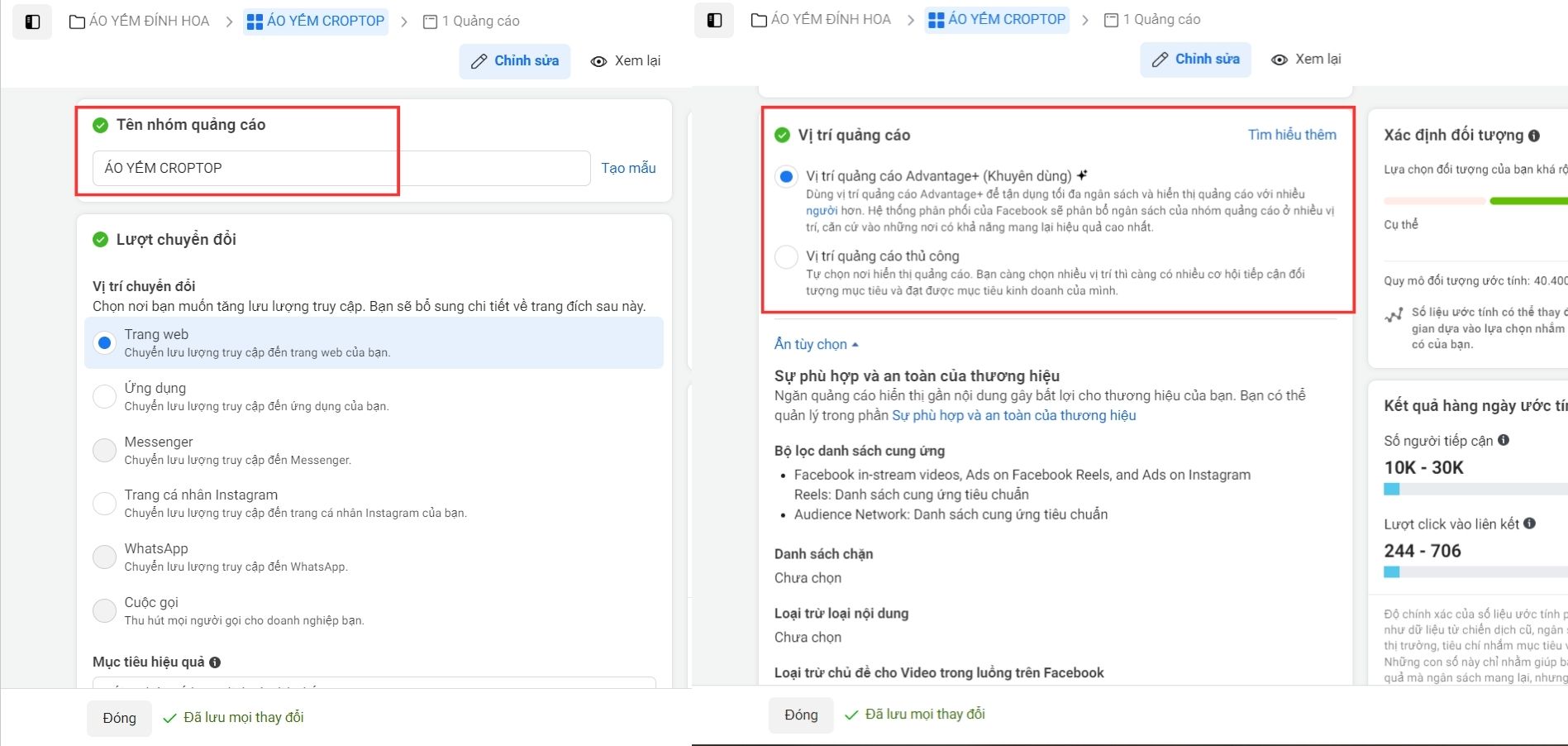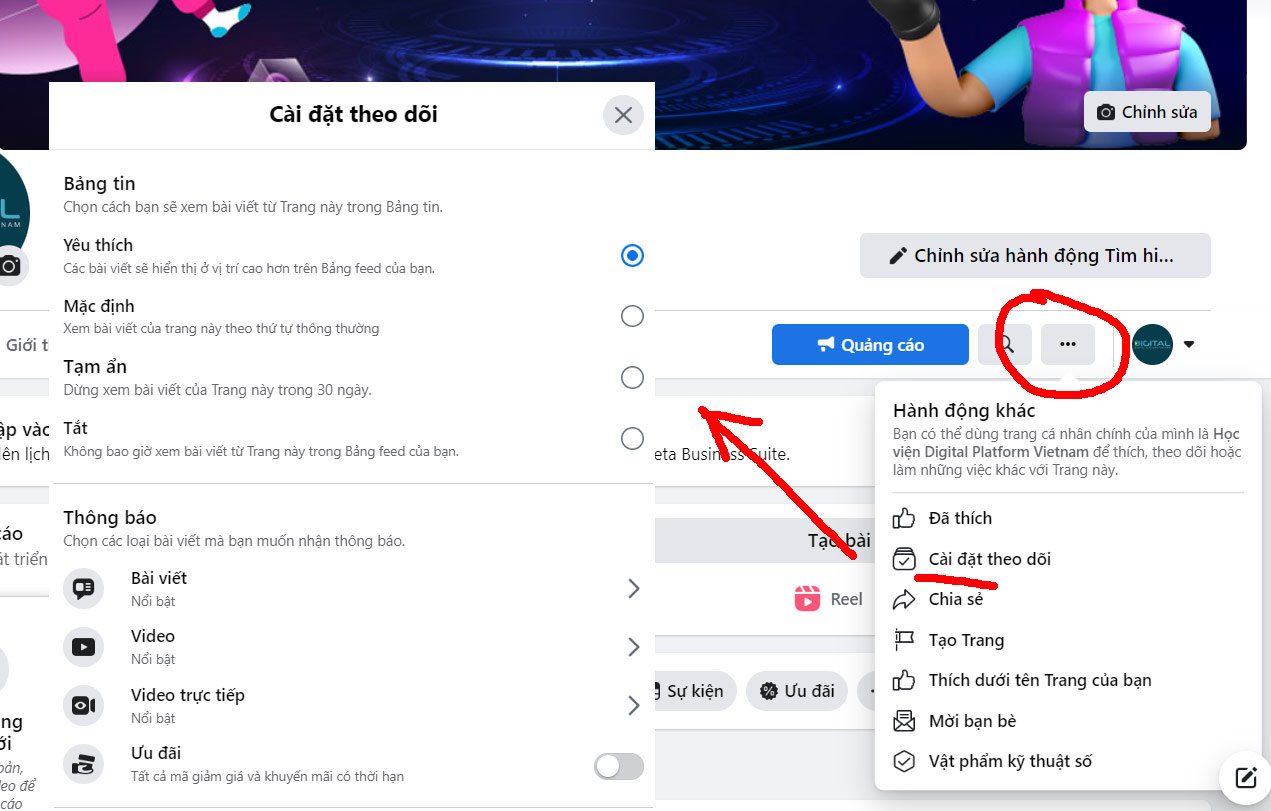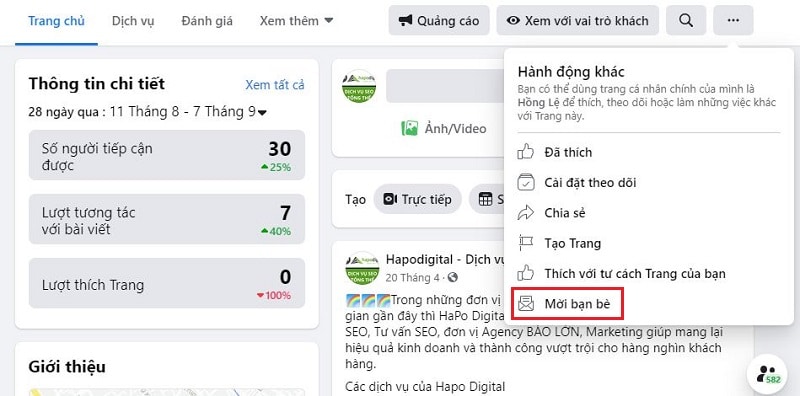Post map
ToggleFacebook has been and is one of the most effective advertising platforms where businesses can quickly reach potential customers. However, to maximize the power of Facebook Ads, choosing the right campaign objective is a decisive factor. Among the countless options, the two objectives that businesses are most interested in are Facebook ads for traffic and Facebook ads for engagement. In this article, SOC LUA will help you learn and determine which and what objective is the best for your campaign by comparing traffic vs engagement Facebook ads
What is the objective of Facebook traffic ads?

Facebook traffic ads are designed to drive users to a specific online destination such as an e-commerce website, a lead-generation landing page, a blog, an app, or an online store. The core goal of this type of campaign is to increase the number of clicks and visits from Facebook to external channels managed by the business.
Pros and cons of Facebook traffic ads
Advantages of traffic ads
The first major advantage of traffic ads is their ability to increase the number of website visitors, thereby helping the brand expand its visibility beyond the Facebook platform.
Another benefit is the opportunity for remarketing, since businesses can create custom audiences from users who have already visited their website and retarget them later.
Traffic ads are also highly suitable for long-term business objectives because they bring potential customers into the marketing funnel, allowing businesses to nurture and gradually convert them.
Furthermore, the effectiveness of the campaign can be measured clearly through tools such as Google Analytics or Facebook Pixel, which provide valuable insights into user behavior.
Disadvantages of traffic ads
However, traffic ads also come with limitations. Not every click is of high quality, as some people may click on the ad without any genuine interest in the product or service. If the target audience is not properly defined, the cost per click (CPC) can rise significantly, consuming more budget. Additionally, traffic ads may not create instant engagement on Facebook, since many users simply visit the website and then leave without further interaction.
What is the objective of Facebook engagement ads?
Unlike traffic ads, engagement ads focus on encouraging users to take actions directly on Facebook. These actions include liking, sharing, commenting on posts, watching videos, clicking on the call-to-action button on a fanpage, attending events, or sending messages. The main goal here is to increase brand awareness and build a loyal community around the fanpage.
Pros and cons of Facebook engagement ads
Advantages of engagement ads
The most notable advantage of engagement ads is their ability to enhance brand credibility. A post with many likes, shares, and comments often creates a stronger sense of trust among new customers.
Additionally, Facebook tends to prioritize distributing content with high engagement, which means the ad can achieve greater reach at a lower cost. Engagement ads are also ideal for building closer relationships with customers through direct interactions in comments or messages.
Disadvantages of engagement ads
On the downside, engagement ads do not directly generate revenue. Just because users like or comment on a post does not mean they will make a purchase. This makes it harder to measure ROI, as engagement metrics alone do not reflect actual business performance.
Moreover, if the audience targeting is not precise, businesses risk receiving low-value engagement, such as fake likes or irrelevant comments.
Differences between traffic vs engagement Facebook ads

When comparing these two ad types, several important differences emerge.
- In terms of campaign goals, traffic ads are designed to drive users away from Facebook to external channels such as websites or landing pages, while engagement ads keep users on the platform to foster social interaction.
- In terms of audience fit, traffic ads are generally suited for businesses with websites, e-commerce stores, or those looking to increase landing page visits. Engagement ads, on the other hand, are more appropriate for brands that aim to build communities, expand reach, and strengthen credibility.
- When it comes to measurement, traffic ads focus on metrics such as CPC, CTR, bounce rate, and time on site. Engagement ads primarily measure likes, shares, comments, or video views.
- As for costs, traffic campaigns are usually more expensive but provide valuable user data for remarketing. Engagement ads tend to be cheaper, but their long-term value requires a more strategic approach.
Should you choose traffic or engagement Facebook ads?
When to choose traffic ads
Businesses should prioritize traffic ads if they already have a well-optimized website or landing page that can effectively convert visitors into customers. Traffic ads are also ideal when the primary goal is to collect leads or boost online sales. Moreover, they are the perfect solution for businesses looking to build remarketing funnels by tracking user behavior on their websites and running retargeting campaigns later.
When to choose engagement ads
Conversely, if the main goal is to increase brand visibility and build customer trust, engagement ads are the better choice. They are especially effective in the awareness stage of the marketing funnel, where businesses need to introduce their brand and encourage more user interaction. Engagement ads also work well for promoting new products, events, or short-term marketing campaigns.
Combining both for optimal results
In reality, instead of choosing just one, many successful businesses combine both strategies. In the early stage, engagement ads help capture attention, create a loyal community, and build credibility. In the next stage, traffic ads play the role of directing potential customers to the website to increase conversions. This combination allows businesses to achieve both brand awareness and sustainable sales growth.
When comparing traffic vs engagement Facebook ads, it is clear that each has its own strengths and weaknesses. Traffic ads focus on driving visitors to websites, enabling remarketing opportunities and boosting conversions, while engagement ads emphasize building credibility, expanding reach, and strengthening community ties. We hope after finishing this article, you can evaluate and define your target to have a suitable strategy that leads to the most effective ads campaigns.
Frequently Asked Questions
Businesses should identify the right target audience, design landing pages with fast loading speed, and implement Facebook Pixel for behavior tracking. A/B testing is also recommended to determine the most effective ad creatives.
Story-driven posts, eye-catching images, short videos, or livestreams often perform well. Businesses should also encourage comments and shares, while responding quickly to user interactions to strengthen engagement.



